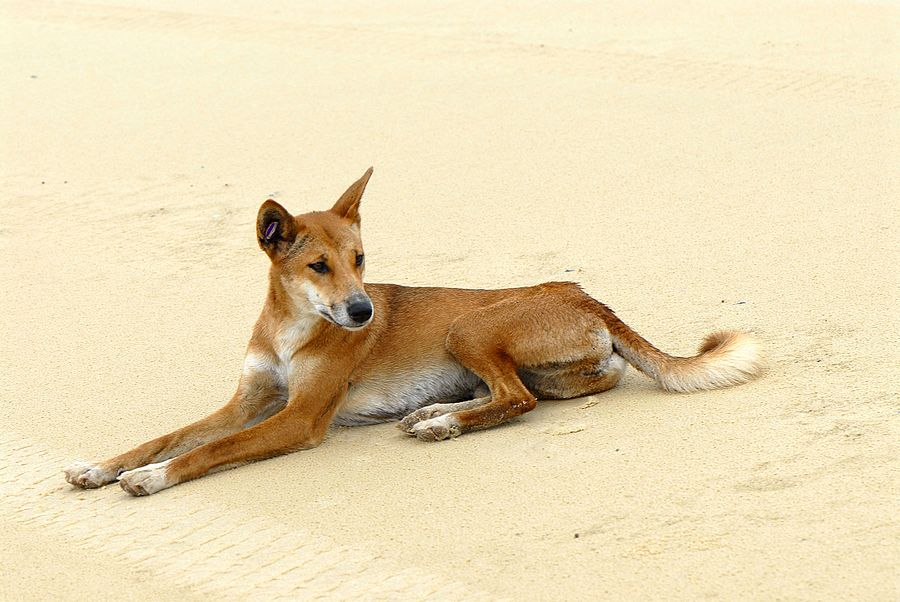Facts About Dingo
The dingo is a medium-sized canine native to Australia, recognizable for its lean, hardy build that grants it speed, agility, and endurance. Although there is some debate about its exact classification, dingoes typically come in three main coat colors: light ginger or tan, black and tan, or creamy white. The oldest dingo fossils, dating back approximately 3,450 years, suggest they arrived in Australia alongside seafarers—possibly from Indonesia. Remarkably, dingoes have changed little over the past 3,500 years, indicating an absence of selective breeding.
Dingoes are closely related to the New Guinea singing dog, with their lineage diverging from that of domestic dogs quite early in history. Genetic studies suggest that there were two migrations of dingoes when Australia and New Guinea were part of the same landmass, known as Sahul. Nowadays, dingoes are found throughout most of Australia, excluding the southeast, Tasmania, and parts of the southwest. They prey on a variety of animals and compete with both native species and introduced ones like foxes and feral cats. Typically, dingo packs consist of a mated pair and their offspring.
When British colonists arrived in 1788, they observed that dingoes lived alongside indigenous Australians, hinting at some level of domestication. As livestock farming expanded in the 19th century, dingoes began preying on sheep and cattle, prompting various control measures that have had mixed success. Despite these efforts, the dingo is recognized as a native animal under Australian law and holds significant cultural importance for indigenous Australians, especially in Dreamtime stories.
The term "dingo" originates from the Dharug language spoken in the Sydney area and was first documented in 1789. Over time, studies have suggested that dingoes and New Guinea singing dogs are actually feral dogs, not separate species. They are considered feral because they descended from domesticated ancestors but now live independently, although occasionally interacting with humans.
The oldest dog remains found in Southeast Asia are about 4,000 years old, while dingoes appeared in Australia around 3,450 years ago. This suggests that dingoes arrived in Australia later than previously thought, likely accompanying humans traveling by boat. The dingo's physical appearance has remained consistent over thousands of years, indicating that natural selection, rather than human-directed breeding, was at play.
Genetic studies have shown that dingoes belong to the domestic dog clade and share ancestry with the grey wolf. Dingoes and New Guinea singing dogs are early members of this group, with some genetic input from the Tibetan wolf. Dingoes are medium-sized, with wild males averaging about 15.8 kg and females 14.1 kg. They have wedge-shaped skulls, and their coat colors include ginger, black and tan, and creamy white.
Dingoes have adapted to various Australian habitats and prey on different species depending on the region. They drink about a liter of water daily in the summer, less in the winter, and can survive without water for long periods in arid areas. Dingoes hunt in packs, employing strategies similar to those of wolves and African wild dogs, enabling them to take down large prey like kangaroos and cattle.
Their primary forms of communication are howling and growling, with barking being rare. In warmer regions, they are mostly nocturnal and exhibit flexible social behaviors, either forming packs or living alone. Dingoes reproduce once a year, with the alpha pair typically being the only successful breeders in a pack.
While dingoes generally avoid humans, they can be dangerous if provoked or fed, with some attacks recorded, including the infamous case of Azaria Chamberlain in 1980. Ecologically, dingoes may have played a role in the extinction of the thylacine and Tasmanian devil on mainland Australia, although this is still debated.
Dingoes are perceived both as pests and as native species, and their legal status varies across Australian states and territories. Control measures such as poisoning, trapping, and fencing have had some success in reducing livestock predation. Conservation efforts aim to prevent hybridization with domestic dogs to preserve pure dingo populations, although this is challenging and costly. Hybridization has resulted in a wider range of fur colors and body sizes in wild dog populations, making pure dingoes increasingly rare.
